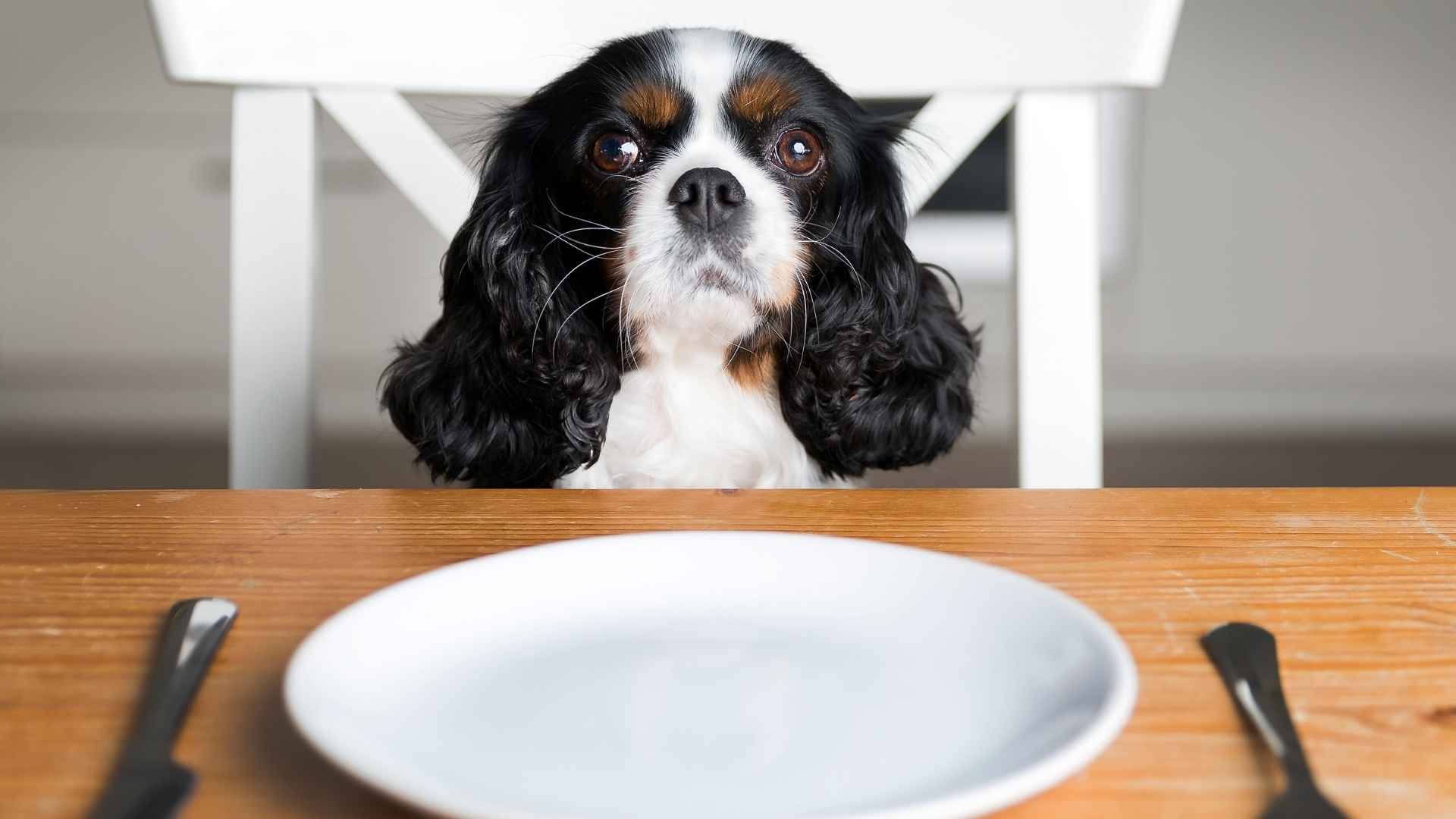If you’ve ever stood in the pet food aisle wondering why your pup turns up its nose at every kibble you try—trust us: you’re not alone! While many dogs will happily devour anything in sight (including your socks), some breeds are just plain picky. We’re talking about those fussy eaters, the four-legged food critics who sniff, inspect, and walk away as if you’ve offended them.
Some prefer only certain textures, while others demand gourmet-level flavors in every bite. It turns out that being a selective eater isn’t just a quirk—it can actually be tied to breed, personality, or even past habits.
In this blog, we’re diving into the world of dog breeds that are picky eaters, revealing the top offenders and what makes them so particular. Plus, we’ll share some tail-wagging tips on how to please even the pickiest pup. Ready to find out if your dog made the list? Let’s dig in!
Dog Breeds that are Picky Eaters
1. Cavalier King Charles Spaniel

Cavalier King Charles Spaniels may look like royalty, and they sure eat like it, too! These affectionate, floppy-eared charmers can be surprisingly fussy when it comes to food. Some Cavaliers will only nibble on specific flavors, turn their nose up at certain kibble sizes, or even demand hand-feeding like the true divas they are.
The Do’s and Don’ts of Mealtime for Cavalier King Charles Spaniels:
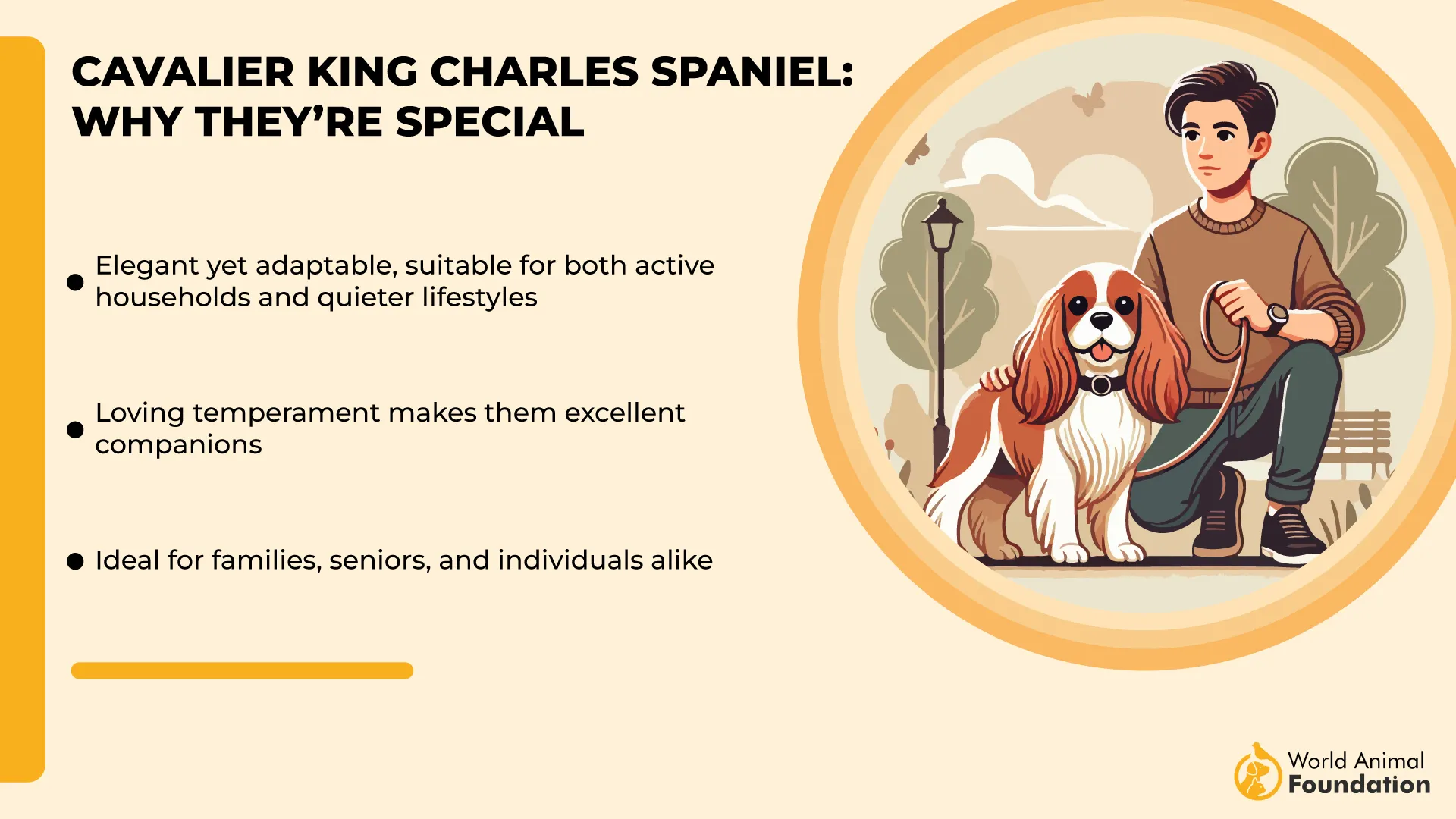
Feeding your Cavalier isn’t rocket science, but it does take a little strategy. High-quality kibble formulated for small or toy breeds is key. Not only does it help with digestion (thanks to the smaller kibble size), but it also delivers the right nutrients for their petite frames. Avoid spicy or overly rich foods—these dogs prefer meaty, mild flavors that won’t upset their sensitive stomachs.
Weight gain is a real concern for this breed, and those soulful eyes will definitely try to guilt you for some extra treats. Avoid giving extra treats, as these can lead to an overweight dog and throw off mealtime balance. Choose a weight-control or low-fat formula, especially for adults and seniors.
Dog treats shouldn’t make up more than 10% of their recommended daily calorie intake, or they can unbalance their diet, states PDSA. You can try a bowl restrict access method or a plate limit to better manage portions.
Feeding needs change as they age, so adjust accordingly: puppy food for under 1 year, adult formulas after that, and chat with your vet around age 7 to see if a senior blend is right. Cavaliers may be picky, but with the right diet and a little patience, they’ll thrive—and maybe even thank you with a royal tail wag!
2. Maltese
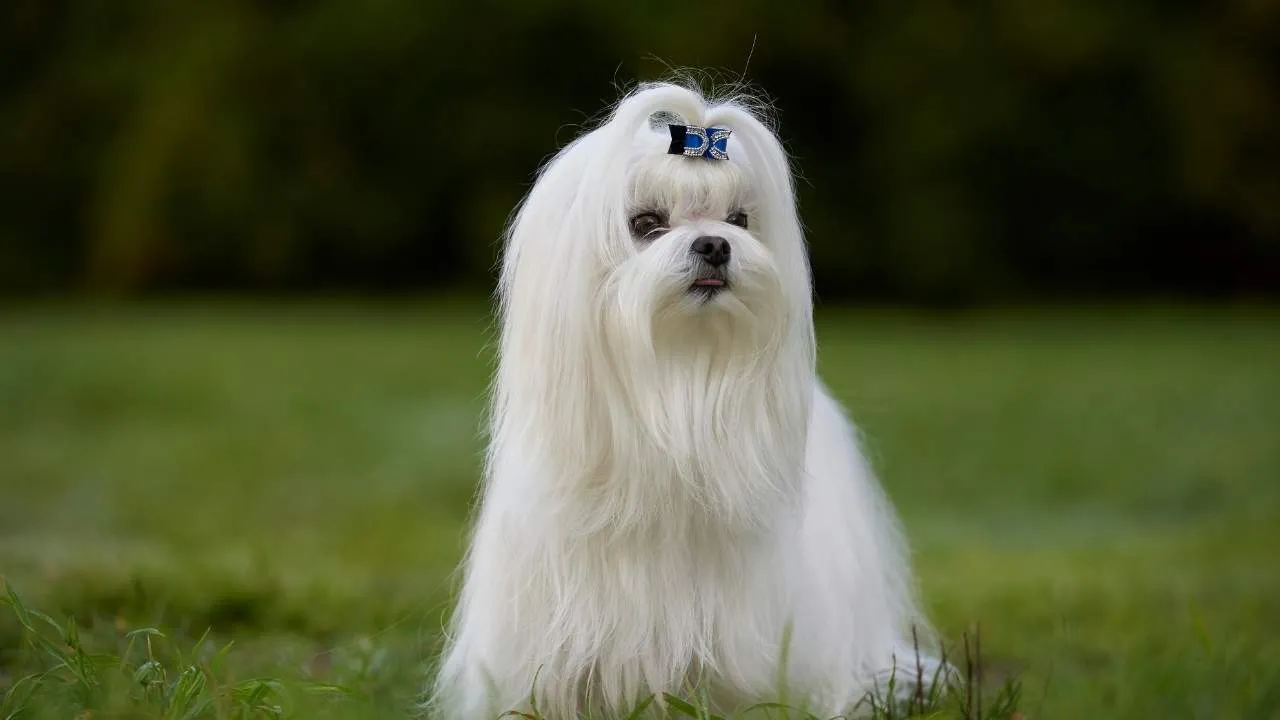
Maltese may be pint-sized, but their taste buds are anything but basic. These little fluffballs can be surprisingly particular about what goes in their bowl. From kibble size to aroma, everything must meet their high standards. If the food’s too hard or smells “off,” your Maltese might just turn up their nose and stage a hunger strike.
Tiny Pup, Big Taste: Feeding Your Maltese Smart:
With delicate digestion and a strong opinion on additives (hard pass on dyes and wheat), Maltese dogs do best on simple, high-quality meals made from lean proteins like chicken and rice. Keep an eye out for sneaky ingredients like preservatives and fillers—they can cause tummy trouble or even serious issues like pancreatitis.
Puppies need extra TLC, especially since they’re prone to low blood sugar. Serve them small meals 3–4 times a day until they’re about four months old. Adults typically thrive on two meals daily, while seniors may benefit from joint-supporting supplements like glucosamine and omega-3s, states PetMD.
And yes, they may try to con you into extra snacks with those big, dark eyes—but obesity is a real health concern. Keep treats in check and consider slow feeders or food puzzles to pace their intake. As always, fresh water and a vet-approved diet are a must. Royal tastes deserve royal care, after all.
3. Shih Tzu

Shih Tzus are sweet, sassy, and about as easy to please at meal time as a food critic at a fast-food joint. These lovable little lions crave attention—and that includes what’s on their plate. High in protein and easy on the tummy? Yes, please. Garlic, onions, or anything too spicy? That’s a hard no.
Tiny Pup, Big Taste: Feeding Your Shih Tzu Right:
This breed is known for turning up its nose at stale flavors or the wrong texture. And if you’ve been sneaking them table scraps (don’t worry, we’ve all been there), don’t be surprised if they start rejecting their dog food altogether. Consistency is key, and so is resisting those puppy-dog eyes begging for a sneaky snack or “just one bite” of your dinner.
To keep your Shih Tzu healthy and happy, go with high-quality dry kibble formulated for small breeds. Not only does it help maintain dental health, but it also supports their energy needs. Puppies need frequent meals to avoid blood sugar crashes, while adults generally do well on two balanced meals a day.
Shih Tzus can easily gain weight, so monitor those tasty treats and food portions carefully. Look for foods that meet AAFCO standards, and talk to your vet about supplements like omega fatty acids for that shiny coat and brain boost. And yes, dental chews? Total game changer.
4. Yorkshire Terrier

Don’t let that dainty size fool you—Yorkies are small, but their appetites come with very specific terms and conditions. These pint-sized pups are known for being picky eaters due to their sensitive tummies and diva-level taste buds. One day they’ll love chicken, the next they’ll act like you served them cardboard. Go figure!
Their little bodies pack a lot of energy, so Yorkies need a protein-rich diet. But not all commercial dog foods cut it, so you may need to look for high-quality options or supplements with vet-approved vitamins and minerals to hit the mark.
Small Dog, Big Nutrition Needs
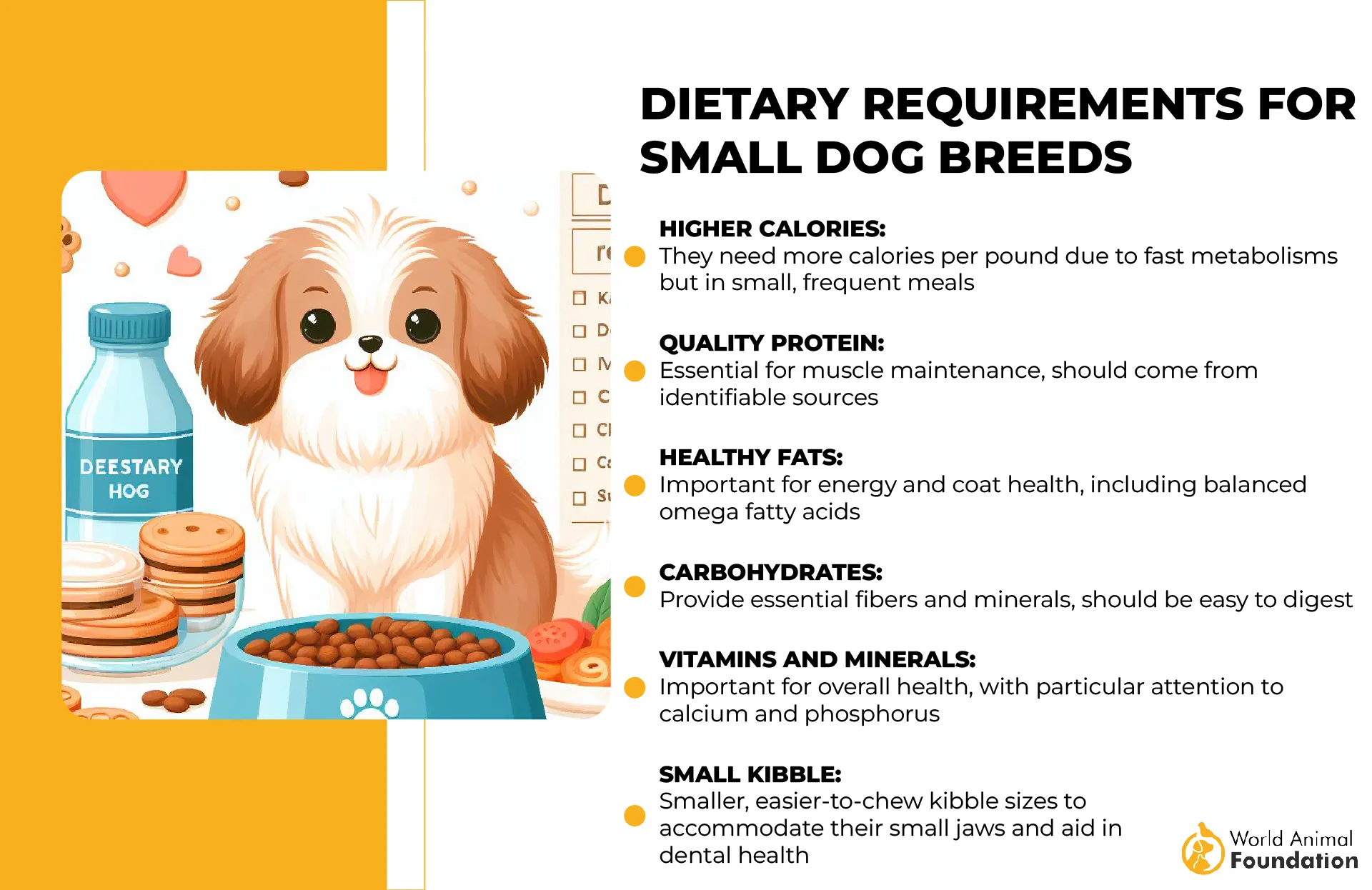
Because Yorkies don’t eat much (they’re snack-sized, after all), every bite needs to be full of nutrition. Go for small-breed kibble that’s easy to chew and packed with nutrients. Wet food can be mixed in, too—just watch for texture and flavor preferences, because these dogs have opinions.
Yorkies may be adorable, but they’re no strangers to health hiccups. From skin allergies to sensitive stomachs, these little charmers need food that’s easy to digest and free from fillers, artificial dyes, and mystery meats. Real meat treats are the gold standard—skip the greasy snacks with weird ingredients you can’t pronounce.
Yorkie puppies are basically tiny energy machines, and they burn calories fast. To keep their blood sugar stable, feed them 3–4 small meals a day. Once they graduate to adulthood, two to three meals daily should do the trick. Adult kibble (especially dental formulas) will help with both nutrition and keeping those pearly whites in check.
5. Boston Terrier
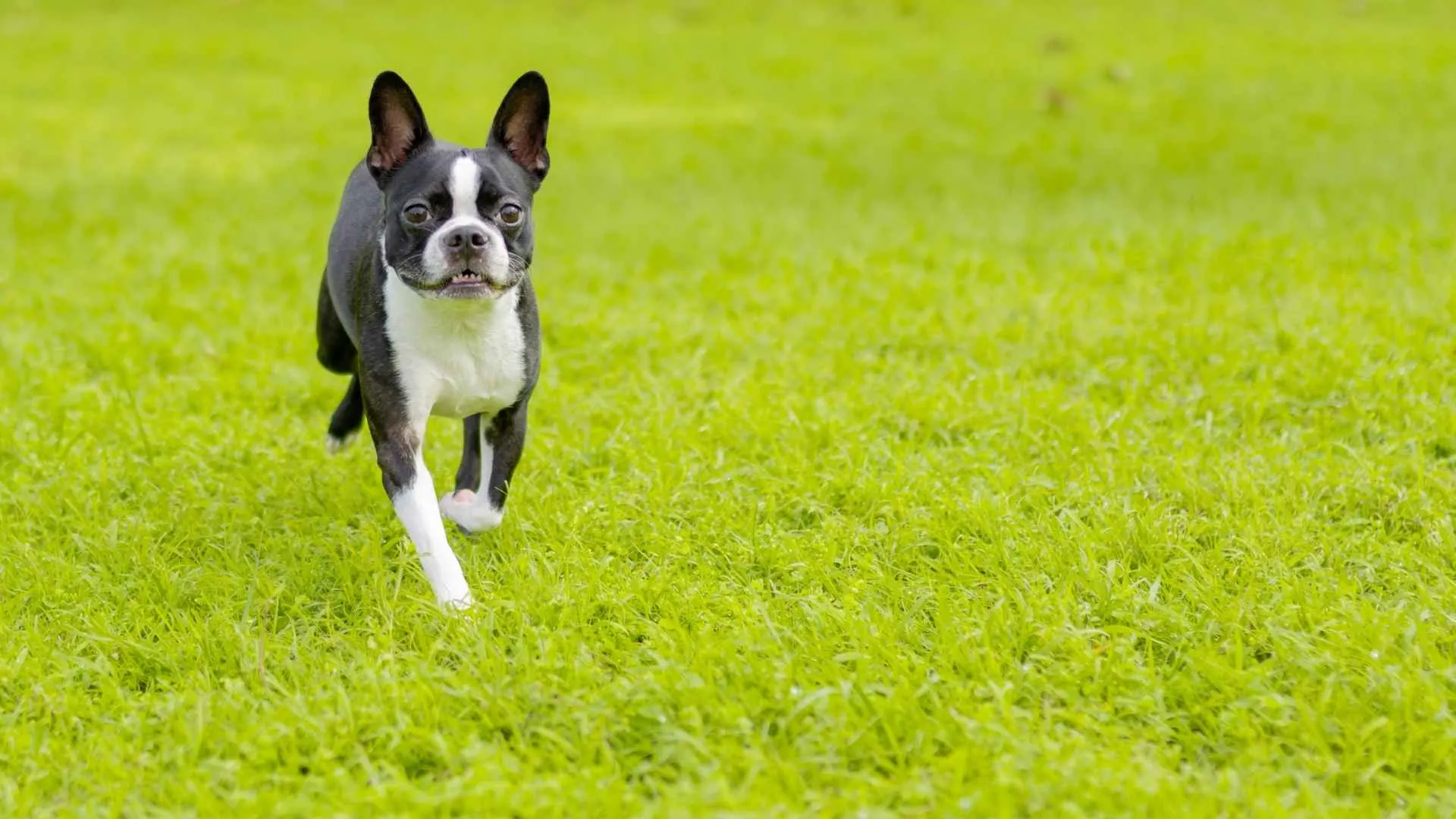
Boston Terriers may look like they’re dressed for a formal dinner, but when it comes to food, they’re not easily impressed. These little charmers can be surprisingly selective and fussy eaters, often turning up their noses at anything that doesn’t meet their gourmet standards—or upsets their sensitive tummies.
What to Feed Your Boston Buddy?
Finding the perfect meal for your Boston may feel like auditioning dishes for a food critic. To keep their interest (and digestion) on track, pet parents often test out different high-quality foods and may even add fresh, healthy toppers like cooked veggies or lean meats for a bit of excitement.
Boston Terriers thrive on well-balanced, high-quality dog food tailored to their life stage—puppy, adult, or senior. Since they’re small in size but big on personality, kibble designed for small breeds makes munching a lot easier. And because their metabolism runs like a tiny engine, adults usually do best with two to three meals a day, while puppies might need a few more to avoid low blood sugar crashes.
Let’s talk about Tummy Troubles!
Boston Terriers are lovable, but their legendary toots? Not so much. A high-quality, easy-to-digest diet can help cut down on the gas and keep the air fresher. These pups also tend to eat fast and a lot, so watch their portions and limit treats. Better food = better nutrition = less stink. Win-win for everyone’s nose!
6. Dachshund

Dachshunds might be small, but when it comes to food, they’ve got big opinions. These sausage-shaped sweethearts are known for their picky palates—often turning their noses up if the food isn’t just the right flavor, texture, or even temperature.
Blame their super-sniffer noses for that gourmet-level selectiveness. Some even fall for the allure of table scraps and human food (rookie mistake!), which can lead to imbalances. To keep their meals both healthy and appealing, pet parents often go through a bit of a culinary trial-and-error phase, with high-quality dog food as the star of the show.
Dachshund Dining Tips: Keep It Clean and Lean
Given their status among the most obesity-prone breeds, it’s essential to choose dog food without fillers, artificial additives, or questionable ingredients, states PetMD. A clean, balanced diet is your best defense against weight-related issues like hip dysplasia and IVDD.
And for those Doxies with sensitive tummies? Simple, high-quality ingredients are the way to go. No junk, no fluff—just food that fuels their adorable, stubby-legged adventures.
Fuel for the Long-Haul (Literally)
To keep your Dachshund feeling spry, go for diets rich in lean proteins and omega-3s. These nutrients help support those hard-working joints and muscles. And if your pup is itching or dealing with tummy troubles, it might be time to check for allergies or sensitivities.
7. Chihuahua

Don’t let their itty-bitty bodies fool you—Chihuahuas have gourmet-level standards when it comes to food. These sassy pups are notorious for turning their noses up at kibble that’s the wrong flavor, texture, or size.
With their pint-sized stomachs and big energy, they need nutrient-dense meals, not filler fluff. And yes, they will hold out for chicken or fish if beef isn’t cutting it. The challenge? Keep them away from human food before they develop five-star tastes and ditch their dog bowl entirely.
What’s in the Bowl? Chihuahua’s Dream Diet
Because of their delicate digestive systems, Chihuahuas thrive on high-protein meals made from quality ingredients—think fish, chicken, or beef without any of the weird fillers like corn or soy. While they may seem tempted by every snack you eat, giving in too often can create a monster (and some major tummy troubles).
These teeny-tiny dynamos are prone to packing on the pounds, so portion control is a must. Two small meals a day for adults is ideal, while puppies need more frequent fuel-ups (three to four meals) to avoid hypoglycemia.
And yes, even a “harmless” nibble from your sandwich can tip the calorie scale! If your Chihuahua starts to waddle instead of prance, it might be time to scale back the snacks and increase the zoomies.
With jaws the size of a peanut and teeth that seem to forget how to stay in place, Chihuahuas need a diet that promotes oral health. Dry kibble is great for scrubbing away plaque, and dental chews can help keep those teeny chompers strong.
Bonus tip for senior Chis: feed from a slightly raised bowl to prevent coughing from trachea collapse—a surprisingly common issue in these little divas.
Whether your Chi is a crunchy kibble connoisseur or a fish filet fanatic, stick with a high-quality, balanced dog food made for small breeds. With the right meal plan, even the pickiest Chihuahua will be licking the bowl clean—and possibly asking for seconds (don’t fall for it!).
Conclusion
Picky eating isn’t just about taste—a dog’s eating habits can be shaped by certain illnesses, medications, challenging behaviour, or simply different reasons unique to the breed. Whether your pup tends to refuse their own food, shows a sudden preference for dog treats, or only seems to eat regularly when coaxed, owners need to stay observant and proactive.
Sometimes, a picky eater may be reacting to certain types of food, texture, or even a food bowl that’s too easy to access. If your dog loves one flavor but avoids another, it doesn’t necessarily mean trouble, but even a reaction to ingredients can signal underlying health issues, so get your dog checked if you’re concerned.
Use healthy options as training tools to encourage good behavior and support their diet. Consistency, proper exercise, and a touch of patience go a long way in helping your dog rediscover food they truly like. If they miss meals often, don’t panic—but don’t ignore it either. With the right guidance, your pup will be eating pretty in no time, tail wags and all!


